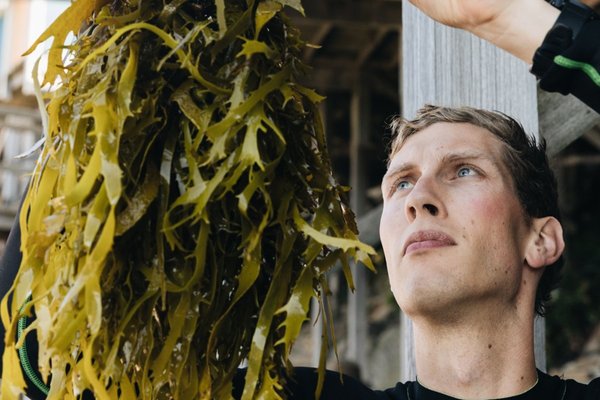Picture perfect: Tim and kelp
Professor Tim Flannery has been featured in the 2020 Archibald Prize portrait, “Tim and kelp” by artist Tianli Zu, inspired by Professor Tim Flannery’s idea to use seaweed to combat climate change.
Australian Museum Honorary Associate, scientist, conservationist and environmentalist – these are just some of the ways to describe the brilliant Professor Tim Flannery. And now, Flannery is the subject of portrait “Tim and kelp” by artist Tianli Zu; a finalist in the Art Gallery of NSW Archibald Prizes 2020, which is currently on display at the Archibald, Wynne and Sulman Prizes 2020 exhibition.

Archibald Prize 2020 finalist Tianli Zu Tim and kelp.
Image: Jenni Carter, AGNSW© Tianli Zu
The Art Gallery of NSW Archibald prizes is one of the country’s most prominent art prizes. Annually, the best portrait is awarded to a person who is, “distinguished in art, letters, science or politics” and painted by an Australasian artist. And this year was no exception: the finalists included some of Australia’s most prominent artists, with subjects who are giants in their field. When commenting why she approached Tim Flannery as her subject, Zu stated: “Tim’s idea of using seaweed to combat climate change came to mind when our country was in the midst of the bushfires earlier this year. The painting was the product of five years’ observation and study and six months of painting.”
Flannery has researched the relationship between seaweed and climate change for a number of years. Tim’s 2017 book titled Sunshine and Seaweed, An Argument for How to Feed, Power and Clean Up the World, explored how seaweed growth can combat climate change and delved into the new technologies that tackle our most pressing environmental threats. This was also the subject of an episode of ABC Catalyst in the same year, where Flannery hosted the episode.
When discussing his area of research, Flannery stated, “If we are to keep global average temperatures from rising above 1.5°C, we'll need to find ways to get a lot of CO2 out of the atmosphere. I've been studying the possibilities for over a decade, and there are frighteningly few means of doing this. One of the most effective and natural ways of doing this may be to encourage the growth of kelp in the oceans, so that the kelp and the carbon it contains can be sequestered in the sea floor at depth. I believe that we really need to start looking seriously at this idea - to see if its economically feasible and environmentally responsible.” For more information on how seaweed can help curb global warming, see Professor Flannery’s TED talk:
Professor Tim Flannery: Can seaweed help curb global warming?
The AM is committed to raising awareness of climate change, its impacts and solutions. The AM is working with experts like Professor Flannery to expand the AM’s education programs, exhibitions and outreach on climate change, as well as research impacts on species and human communities and reduce the AM’s own carbon footprint. Click here to learn more and take action.
More information:
Gage, A. 2019. Tim Flannery on changing the world this World Environment Day. Australian Museum blog.












